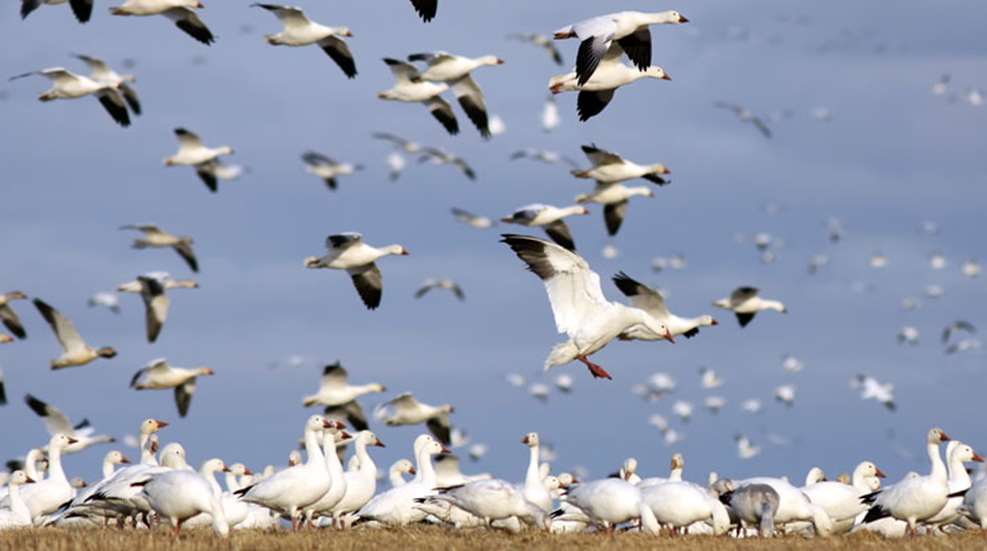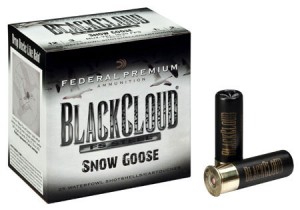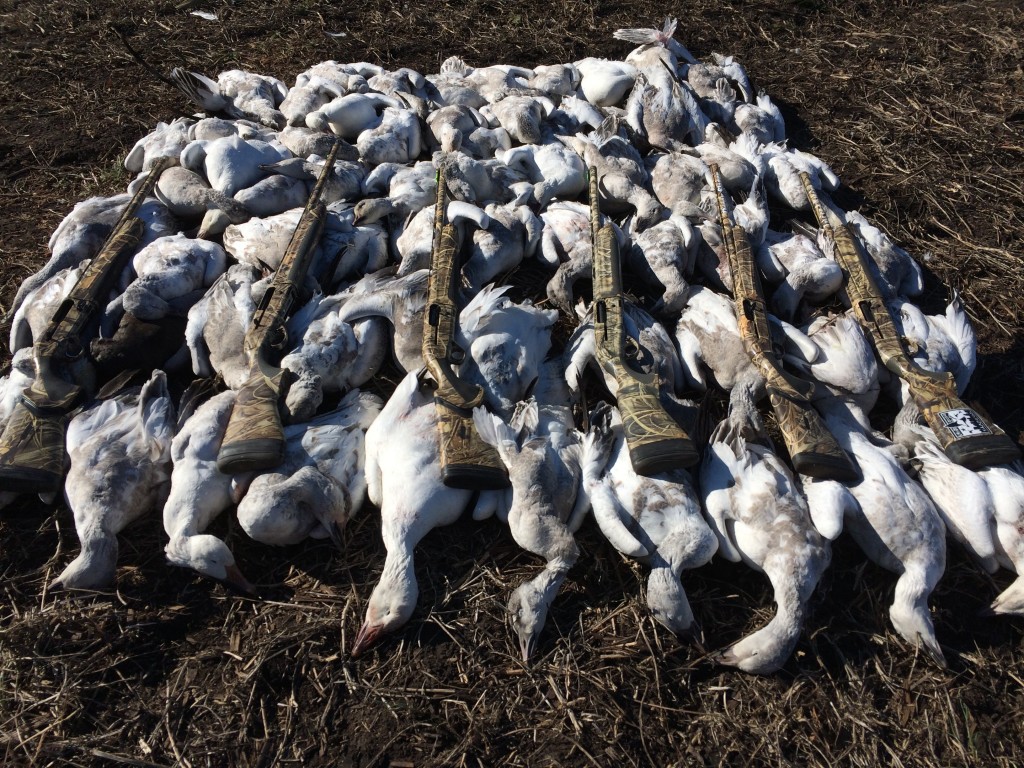
It was around 9 a.m., and a dozen or so birds had decided that they’d make a close enough pass at our decoy spread to elicit a volley. I’d loosed two shells when my concentration was broken by something thumping down into the reeds beside me. I had no idea what happened—until the coarse language started flying. Somehow, some way, one of the first birds to be felled had managed to come crashing down right on my father’s head. When snow goose hunting is good, it can be very good—apparently so much so that they’ll quite literally be beating down the roof of your blind. The bird that brained Dad might have been snow No. 21 or 22 that we’d blasted out of the sky on that mild February morning in Delaware. I honestly can’t tell you for sure. We never had to stop and count.
With no bag limits, waterfowlers on a spring snow goose hunt can check their math at the door—though on one of those good days, you might be tempted to tally the spent shells at your feet. You can go through an awful lot of shot when there’s no plug in your gun. Such is the nature of conservation seasons.
Since 2000, a growing number of states in flyways across the nation have been authorizing a Light Goose Conservation Order, which effectively serves as an extension of the “light goose” hunting season, beyond the existing migratory bird hunting framework. Exact dates vary by region, but conservation seasons typically open in January or February and run into late March or early April. State fish and game departments set their own rules, separate from the general waterfowl framework. And though they may differ slightly state-by-state, the major rule changes are largely the same: bag limits are dropped, electronic calls are approved, shooting hours are extended, and shotguns can be unplugged and fitted with a magazine extension tube, to boot. Greater snows, lesser snows and Ross’ geese are covered under the “light goose” moniker.
What prompted such lax regulations? That much is simple: an unprecedented boom in the light goose population. By the late ’90s, conservationists and migratory bird specialists had noted a severe and potentially dangerous overabundance of light geese. A committee of experts—which featured among others Dr. Bruce Batt, then the chief biologist of Ducks Unlimited—was eager to address the issue. The findings eventually presented to Congress proved dire. It was estimated that the number of mid-continent light geese had reached 5.2 million—a population explosion of nearly 650 percent since 1969.
The report went on to predict that population numbers would continue to increase by an estimated 5 percent with each passing year if left unchecked. The growth was largely attributed to three primary factors: an expansion of agricultural areas and the resulting abundance of cereal grain crops; the establishment of sanctuaries along U.S. flyways that migrating light geese frequented; and an out-and-out decline in light goose harvest rates.
Such numbers were deemed environmentally unsustainable by biologists. The snow geese were a threat to the continent’s Arctic tundra and, by default, the countless other species of gamebirds that migrated through the same regions. At the time, Congress was told that a third of the tundra habitat had been destroyed, another third was on the brink of the same fate and the final third was severely overgrazed. In not nearly so many words: There were too darn many of the things, and it was too darn hard to harvest a sufficient number of them under the existing game laws. It was time to take action.
The result would go on to be known as the Arctic Tundra Habitat Emergency Conservation Act, which birthed the lax regulations that have paved the way for the conservation season offerings we’re seeing in 2015. No bag limits ensure the good days will properly balance out the bad, electronic calls make it easier to bring the ever-wary snows within range of hunters, unplugged shotguns increase the odds of killing birds when a shot’s called, and the extended seasons allow hunters to work massive flocks of birds at the very height of the migration.
Though the official paperwork originally referred to light geese as a “mid-continent” problem, conservation seasons are now enjoyed in multiple flyways—in no small part because, despite all those aforementioned loose regulations, the light goose population isn’t any worse for the wear. The why to that, and what it means, is a far longer story—though the decline in waterfowl hunters almost assuredly doesn’t help. A primary factor, of course, is the resilience and wariness that snow geese possess. They’re among the continent’s most difficult waterfowl to bring to barrel, which has prompted more than a few hunters to give up on them entirely. Their largest flocks often possess thousands of experienced eyes, always on the lookout for signs of trouble. For many hunters, bagging a lost snow goose is just a happy coincidence that occasionally occurs while hunting other migratory birds.
 That said, those determined (or is it crazy?) few who doggedly pursue the white devils are in an unprecedented era of opportunity. Conservation orders have arrived again, and states are striving to make the spring snow goose season as appealing as possible to both local and out-of-state waterfowlers. Many seek no further financial commitment beyond the usual migratory gamebird regulations; those who do rarely ask for much, even from nonresidents. Manufacturers have taken notice, too. Mossberg offers an all-white version of its 930 autoloader, with an extension tube already attached. Federal Premium Ammunition added a high-velocity “Snow Goose” variant to its Black Cloud shotshell series a few years back. The conservation tools are available.
That said, those determined (or is it crazy?) few who doggedly pursue the white devils are in an unprecedented era of opportunity. Conservation orders have arrived again, and states are striving to make the spring snow goose season as appealing as possible to both local and out-of-state waterfowlers. Many seek no further financial commitment beyond the usual migratory gamebird regulations; those who do rarely ask for much, even from nonresidents. Manufacturers have taken notice, too. Mossberg offers an all-white version of its 930 autoloader, with an extension tube already attached. Federal Premium Ammunition added a high-velocity “Snow Goose” variant to its Black Cloud shotshell series a few years back. The conservation tools are available.
So long as you can get them to work, the time is now for snow geese. Be advised: They can be fickle. As Dad once told me, “The first time you go, you’re hunting snow geese. Everything after that is revenge.”
Oh, and aside from a couple scrapes, he recovered from that blindsiding I mentioned. Always was a bit hardheaded—he does regularly hunt these things, after all.






































